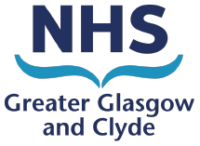ARCP (Annual Review of Competence Progression) – The ARCP is a formal process for reviewing foundation doctors’ progress which uses the evidence gathered by them and supplied by their supervisors. A board will review the evidence displayed on TURAS and will decide the outcome.
CBD (Case based discussion) – A presentation made to a senior doctor discussing a particular case you were involved in during your placement and what you learnt.
DOPS (Direct Observed Procedures) – Any practical procedure performed under supervision that is outside of the 15 core procedures required to be completed by ARCP.
Eportfolio/TURAS – TURAS is the online portfolio system for junior doctors working in GG&C. Here you can upload evidence of case based discussion, mini-cex and TABs. This will also be the platform for writing reflections, uploading certificates and at the end of the year the evidence uploaded to your eportfolio will be appraised for your ARCP.
EWTD (European Working Time Directive) – A directive from the Council of the European Union to protect the health and safety of workers in the European Union. It lays down minimum requirements in relation to working hours, rest periods, annual leave and working arrangements for night workers.
H@N (Hospital at Night) – This varies between hospitals but refers to the team of nurses/HCAs/doctors working the night shift. You can handover jobs to H@N such as bloods tests or chasing scan results.
HEPMA (Hospital Electronic Prescribing and Medicines Administration) – digital prescribing system replacing paper drug chart (kardex) for inpatient areas across NHSGGC.
IDL (Immediate Discharge Letter) – a summary of a patients’ care while in hospital. This letter will also go to their GP and sometimes may need to be sent to another specialty for outpatient follow up.
LearnPro – Online learning platform hosting elearning statutory and mandatory training topics for all staff working in health and social care settings.
MDT (Multidisciplinary Teams) – A meeting comprising of specialist doctors and nurses who meet regularly to establish diagnosis and treatment plans based on radiology results, blood and tissue samples. The MDT serves as a means to enable practitioners and other professionals in health and social care to collaborate successfully.
Meds rec (Medicines Reconciliation) – Patients admitted to hospital will need their regular medicines transcribed onto the kardex/HEPMA. The medicines reconciliation will involve finding out what medications the patient is taking in the community through various sources such as portal, dosette boxes/blister packs and from the history. A precise and thorough meds rec minimises the chance for drug errors and ensures optimal care for patients.
Mini-Cex (Mini clinical evaluation exercise) – This will include a formal history, examination of a patient. An subsequent presentation to a senior. Evidence for this can be uploaded to your eportfolio.
PDP (personal Development plan) – This plan will consist of a particular experience you want to gain or skill you wish to build upon during your current placement. A PDP will be agreed upon with your supervisor in your initial meeting.
Portal – An additional electronic patient record system widely accessed from various NHS clinical systems. It will contain a more extensive database of patient records e.g previous clinic letters, hospital admissions as well as blood results and scan reports. Portal is also used to complete IDL’s and Meds recs when organising a patients discharge.
SLE (supervised learning event) – Mini-Cex/CBD/DOPS are the SLEs you will be required to complete and upload to your eportfolio over the next year. There will be a minimum number of SLEs you are required to complete for each block.
SOP (Standard Operating Procedure) – A written means to instruct staff on how a particular procedure should be carried out and lays out boundaries of responsibility.
TAB (Team Assessment of Behaviour) – TABs are feedback forms concentrating on your behaviour in the workplace rather than your clinical knowledge. There will a minimum number of TABs that have to be completed before you can view the content of the feedback forms. Once completed the feedback will be uploaded to TURAS and can be viewed by yourself and
supervisor.
TrakCare – The electronic patient management system where all patient episodes (outpatient, inpatient and emergency) are recorded. The systems incorporates electronic requesting (Order Comms) for labs, radiology and cardiology and contains the list of patients on the wards, the results of their scans, blood tests and other investigations.
